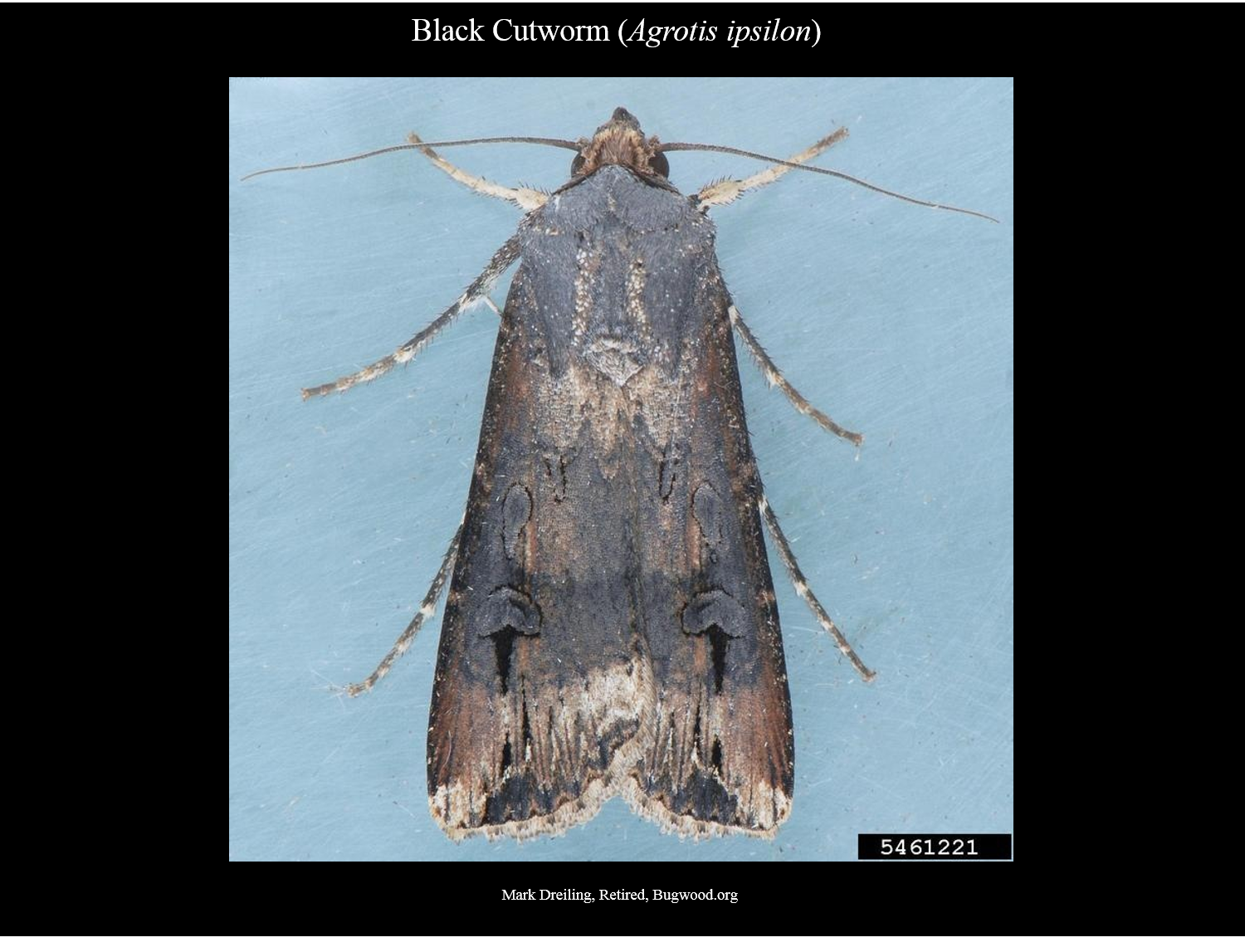

As they mature, larvae move to the soil during the day, and climb plants to feed at night. Larvae first feed on their egg shells, before moving to feed on leaves (minor), flowers and pin pods (Figure 5). About a week after the eggs are laid, they turn dark purple, indicating they will hatch within a day or two. Eggs are laid in clusters deep in the dry bean canopy, on upper or lower surfaces of dry bean leaves. Moths are nocturnal and the females live for an average of nine days, laying up to 600 eggs in their lifetime. Moths also migrate in each year from neighbouring states. WBC have one generation per year and overwinter as pre-pupae in Ontario soils, emerging as moths in early July (Figure 4). While pheromone traps provide information on the local abundance of WBC moths, they do not provide information on egg laying and crop injury. Beneficial insects and entomopathogens may be contributing to mortality of WBC in the field. Thorough scouting for pod damage ensures an insecticide is required and limits injury to off-target insects.

If you see pod feeding (Figure 3), an insecticide application is recommended. Spraying during vegetative stages will not control WBC. Larvae also feed on flowers and may feed on leaves when they first hatch, but leaf feeding is very minor. Maximizing spray coverage on pods provides a greater chance for larvae to ingest the insecticide while feeding. Larvae hide in soil during the day and feed on pods at night. Pods are the main tissue that needs to be protected from WBC feeding. Spraying prior to peak flight will leave the field unprotected from larvae that emerge later. Spraying insecticide 10-20 days after peak flight targets the highest number of larvae emerged from these eggs. Peak flight describes the period when the highest numbers of moths are active in an area and are likely laying eggs. Low activity (150) – although not an insecticide action threshold – indicates that other criteria need to be investigated and met for insecticide application to be justified. The total number of moths caught in trap indicates activity (Figure 2).

Below are best practices for minimizing this insect’s impact to your bottom line. Western bean cutworm can significantly reduce the quality and yield of your dry bean crop.


 0 kommentar(er)
0 kommentar(er)
